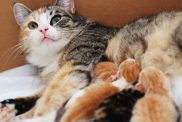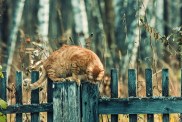The Bengal cat is a hybrid breed developed by crossing domestic cats, including the Egyptian Mau, with the wild Asian Leopard Cat. Renowned for their dramatic spotted or marbled coats, Bengals often resemble miniature leopards, with sleek, muscular bodies and distinctive markings that include rosettes, stripes, or swirls. Their coats have a unique silky texture and a shimmering “glitter” effect in some cats, making them truly one of a kind. Despite their fierce and wild appearance, Bengal cats are known for their loving and friendly personalities, forming strong bonds with their human families.
Energetic and intelligent, Bengal cats thrive in active homes that can meet their need for stimulation and exercise. These highly playful cats love climbing and exploring. They often show a surprising fondness for activities like fetch or playing in water. Bengal cats require plenty of mental and physical enrichment, such as climbing trees, scratching posts, and puzzle toys, to keep them entertained.
When considering a Bengal, it’s advisable to prioritize adopting from rescue organizations or shelters to provide a loving home to a cat in need. However, if you decide to purchase, it’s crucial to choose a reputable breeder. When purchasing from a reputable breeder, the Bengal cat price can be close to $3000. If your heart is set on this breed, conduct thorough research to ensure that the breeder follows ethical practices and prioritizes the well-being of their cats. Reputable Bengal breeders prioritize the health and temperament of their cats. They also conduct necessary health screenings, and provide a nurturing environment for the kitties. This active approach ensures that you bring home a healthy and happy kitty while discouraging unethical breeding practices.
Are Bengal cats hypoallergenic?
A frequently asked question, this beautiful breed isn’t hypoallergenic. However, they’re typically rated as low to medium risk for individuals with cat allergies. Due to their short coat, tendency to groom less than other breeds, and minimal shedding, they can still be a suitable option for those with mild cat allergies. It’s a good idea to have Benadryl on hand, just in case.
Quick Facts
- Appearance: Bengal cats are known for their distinctive leopard-like appearance. They can have spotted coats that can be a variety of colors, including brown, black, orange, and silver. They have muscular bodies, athletic build, and a long tail.
- Personality: Intelligent, curious, and active. They are also very affectionate and love to be around their owners. Bengals can be trained to perform tricks and enjoy playing games.
- Health: Generally healthy, but they are prone to a few health conditions, such as hypertrophic cardiomyopathy (HCM) and progressive retinal atrophy (PRA).
- Fun facts: Bengal cats are a hybrid breed, meaning that they are a cross between a domestic cat and an Asian Leopard Cat. They are also the only domestic cat breed with spotted rosettes on their coats.
- In one episode of “My Name is Earl,” Amy Sedaris plays a cat fancier who owns a Bengal (though it is quite obviously played by two different cats).
- Suki is a Bengal cat who is known for her adventures with her owner, Marti Gutfreund. Suki has over 1.8 million followers on Instagram, and she has been featured in several magazines and newspapers.
Bengal Cat Pictures
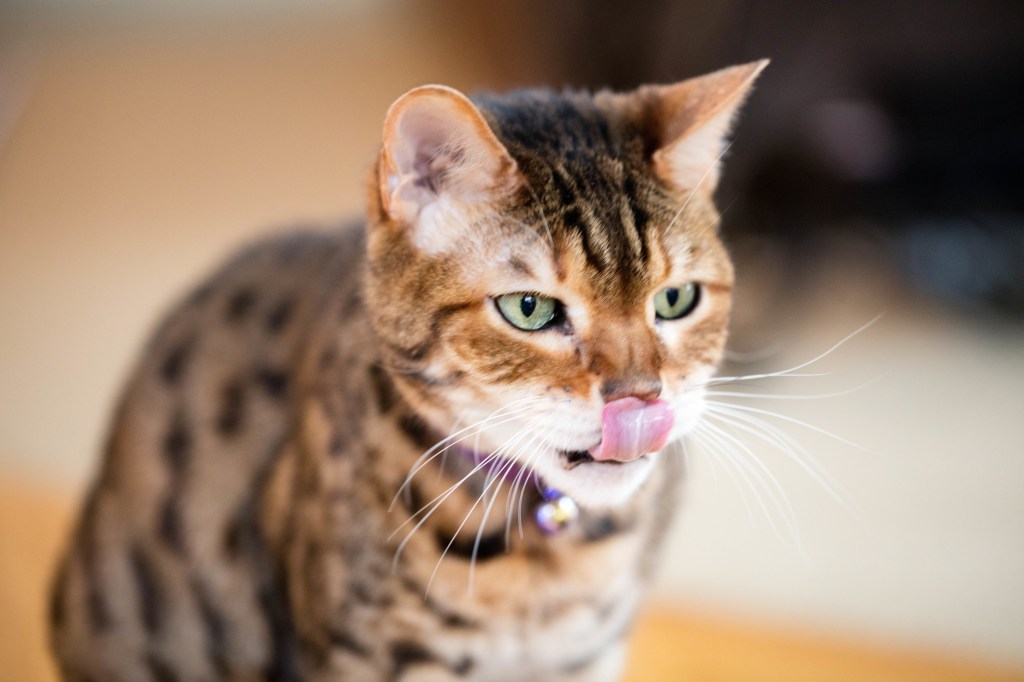
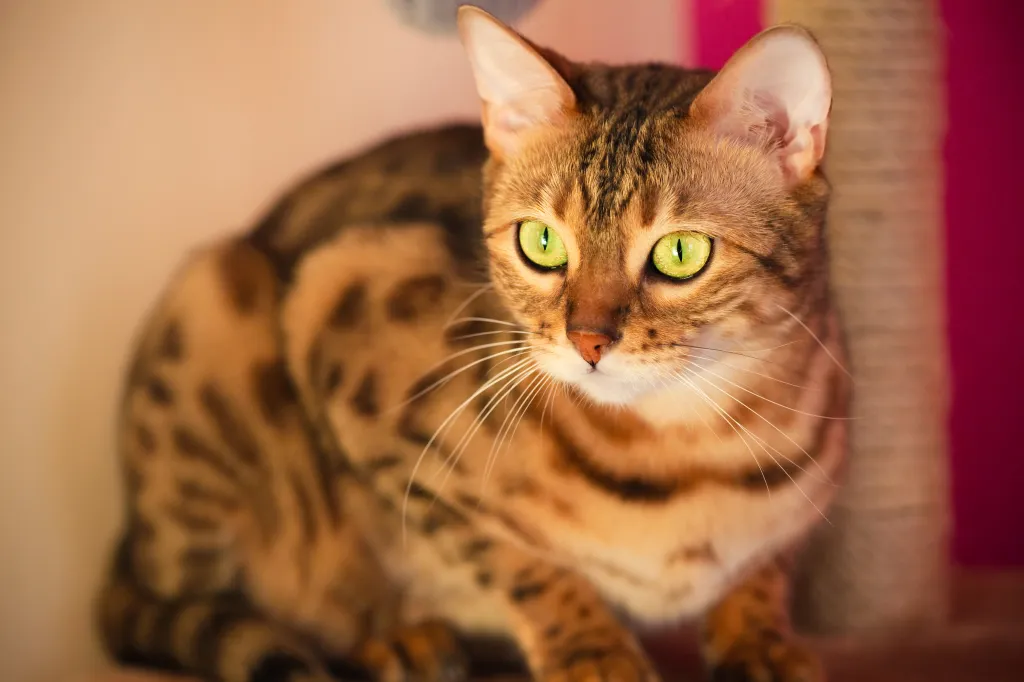
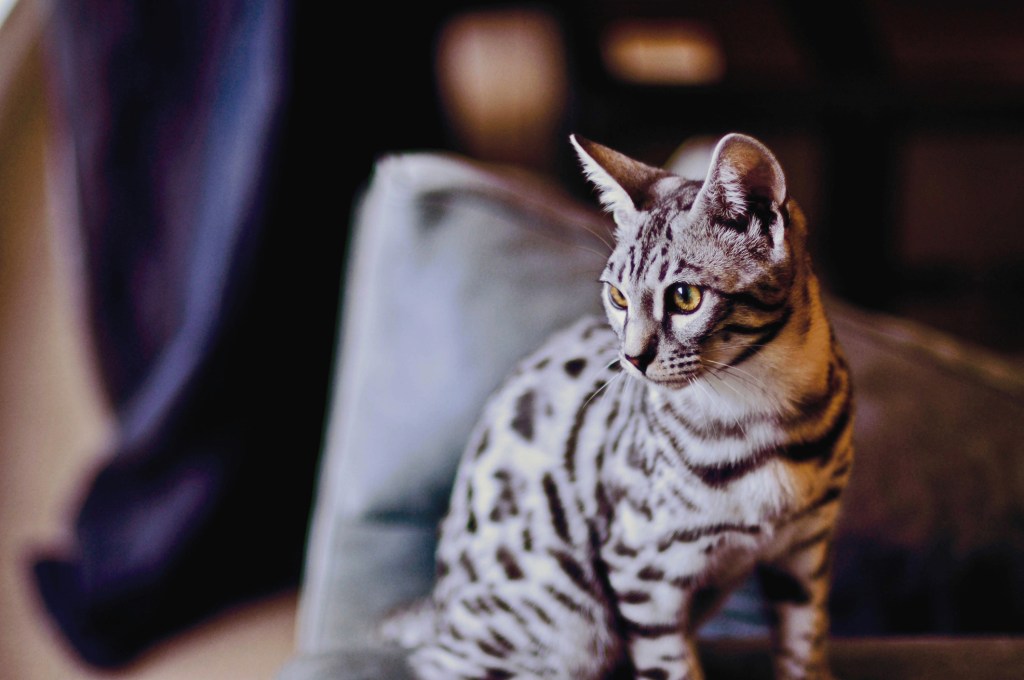
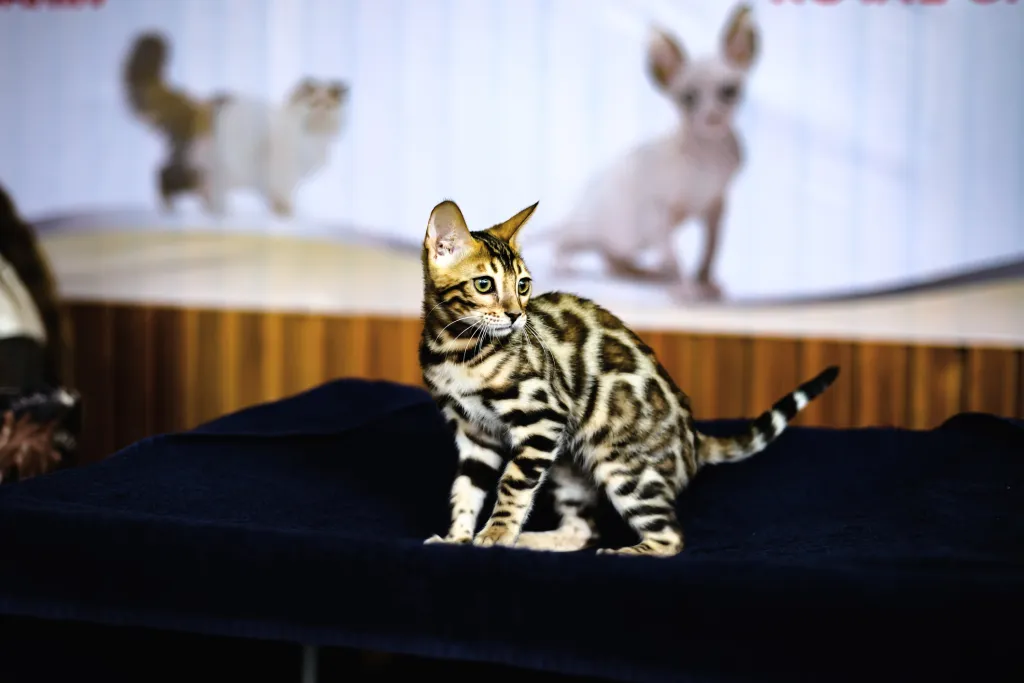
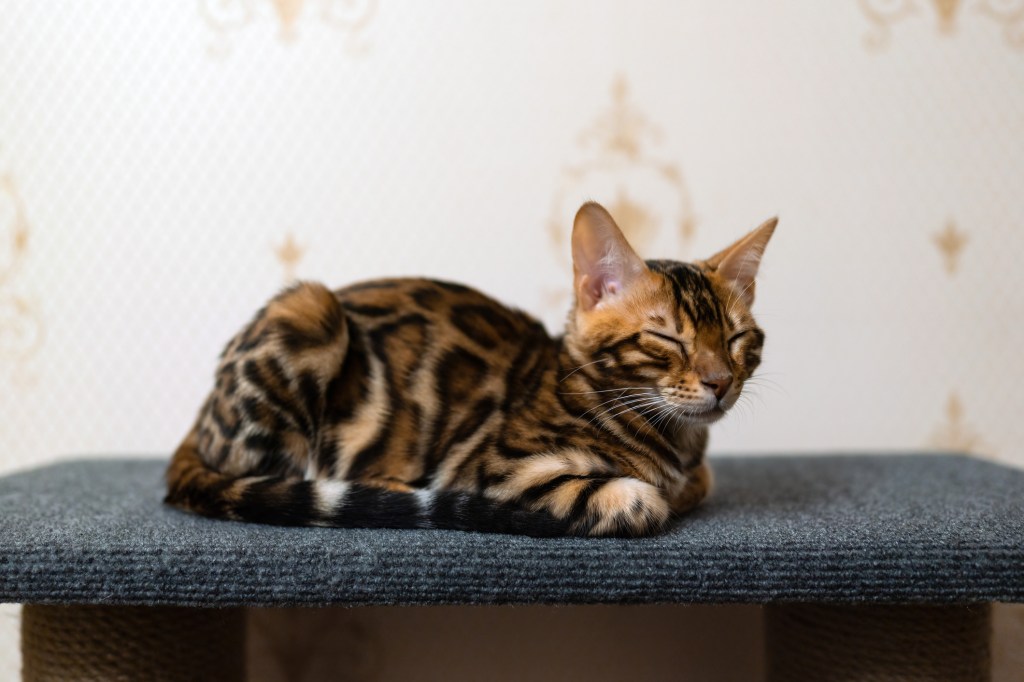
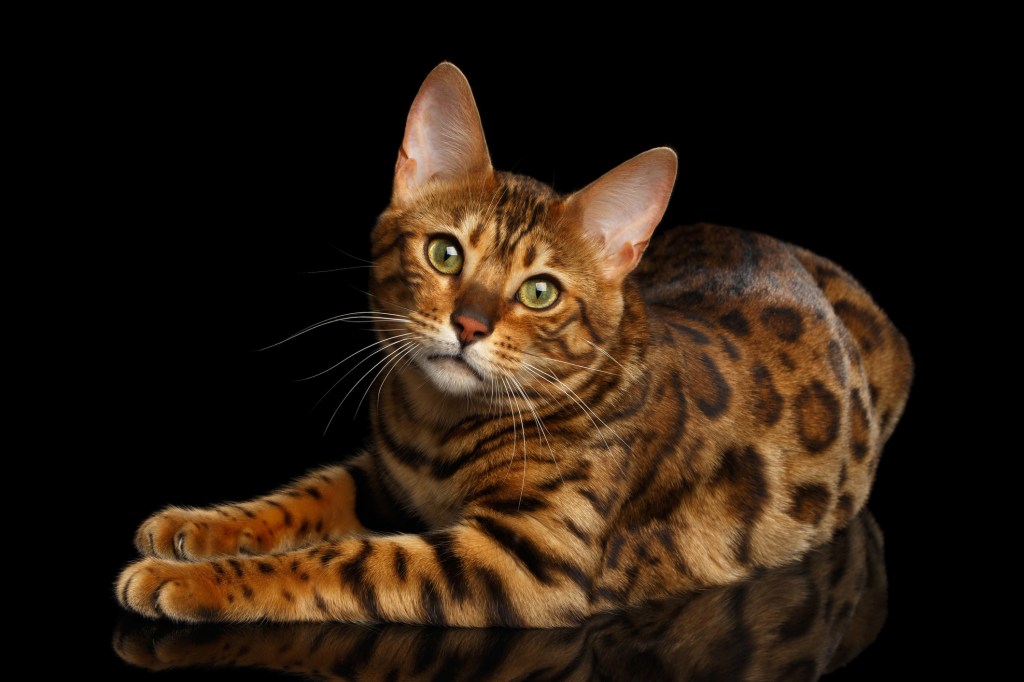
-
Affectionate with Family
Some cat breeds are typically independent and aloof, even if they’ve been raised by the same person since kittenhood; others bond closely to one person and are indifferent to everyone else; and some shower the whole family with affection. Breed isn’t the only factor that goes into affection levels; cats who were raised inside a home with people around feel more comfortable with humans and bond more easily.

See Cats Less Affectionate with Family -
Amount of Shedding
If you’re going to share your home with a cat, you’ll need to deal with some level of cat hair on your clothes and in your house. However, shedding does vary among the breeds. If you’re a neatnik, you’ll need to either pick a low-shedding breed or relax your standards. This furniture cover can make it easier to clean up cat hair and keep it off your sofa!
-
General Health
Due to poor breeding practices, some breeds are prone to certain genetic health problems. This doesn’t mean that every cat of that breed will develop those diseases; it just means that they’re at an increased risk. If you’re looking only for purebred cats or kittens, it’s a good idea to find out which genetic illnesses are common to the breed you’re interested in.
-
Potential for Playfulness
Some cats are perpetual kittens—full of energy and mischief—while others are more serious and sedate. Although a playful kitten sounds endearing, consider how many games of chase the mouse-toy you want to play each day, and whether you have kids or other animals who can stand in as playmates. A classic wand cat toy like this one is perfect for playful felines!
-
Tendency to Vocalize
Some breeds sound off more often than others with meows, yowls, and chattering. When choosing a breed, think about how the cat vocalizes and how often. If constant “conversation” drives you crazy, consider a kitty less likely to chat.
-
Kid-Friendly
Being tolerant of children, sturdy enough to handle the heavy-handed pets and hugs they can dish out, and having a nonchalant attitude toward running, screaming youngsters are all traits that make a kid-friendly cat. Our ratings are generalizations, and they’re not a guarantee of how any breed or individual cat will behave; cats from any breed can be good with children based on their past experiences and personality.
-
Friendly Toward Strangers
Stranger-friendly cats will greet guests with a curious glance or a playful approach; others are shy or indifferent, perhaps even hiding under furniture or skedaddling to another room. However, no matter what the breed, a cat who was exposed to lots of different types, ages, sizes, and shapes of people as a kitten will respond better to strangers as an adult.
-
Easy to Groom
Some breeds require very little in the way of grooming; others require regular brushing to stay clean and healthy. Consider whether you have the time and patience for a cat who needs daily brushing. You should definitely pick up this awesome de-shedding tool for cats of any hair length!
-
Intelligence
Some cat breeds are reputed to be smarter than others. But all cats, if deprived the mental stimulation they need, will make their own busy work. Interactive cat toys are a good way to give a cat a brain workout and keep them out of mischief. This scratcher cat toy can keep your smart kitty busy even when you’re not home!
-
Pet Friendly
Friendliness toward other household animals and friendliness toward humans are two completely different things. Some cats are more likely than others to be accepting of other pets in the home.
Bengal Cats History
With his distinctive spotted coat and large size, the Bengal looks like a wild cat on the prowl, but although one of his ancestors is the small, wild Asian leopard cat, he’s a domestic cat through and through. Bengals take their name from the Asian leopard cat’s scientific name, Felis bengalensis.
They were created through crosses between an Asian leopard cat — which in the 1950s and into the 1960s could be purchased at pet stores — and domestic shorthairs. Jean Mill, a breeder in California, was the first to make such a cross, but not because she wanted to create a new breed. She had acquired a leopard cat and allowed her to keep company with a black tom cat so she wouldn’t be lonely.
To her surprise, since she hadn’t thought the two species would mate, kittens resulted, and Mill kept a spotted female. Breeding her back to her father produced a litter of spotted and solid kittens. At about the same time, Dr. Willard Centerwall was crossing Asian leopard cats with domestic cats at Loyola University. The leopard cats were resistant to the feline leukemia virus, so researchers were interested in finding out if the trait could be passed on to hybrid offspring.
Various breeders became interested in developing the cats as a breed. Mill was one of them. Changes in her life had caused her to give up cat breeding, but she was ready to begin again. She had acquired some of Dr. Centerwall’s hybrids and sought out suitable males to breed to them. One was an orange domestic shorthair that she found in India, of all places, and the other was a brown spotted tabby acquired from a shelter.
Bengals today are considered to be the same as domestic cats, and any Bengal purchased should be at least four generations removed from any ancestors with wild bloodlines. The first cat association to recognize the Bengal was The International Cat Association, which granted the breed experimental status in 1983, followed by full recognition in 1991. The Bengal is also recognized by the American Cat Fanciers Association, the Canadian Cat Association, and the United Feline Organization. Bengal cats are so sought after, that a British woman paid over $50,000 for her Bengal cat in 1990, dubbing them the “Rolls Royce” of feline companions.
Bengal Cats Size
This is a medium-to-large cat. Bengals weigh eight to 15 pounds or more.
Bengal Cats Personality
The Bengal is highly active and highly intelligent. This makes him fun to live with, but he can sometimes be challenging. On the whole, the Bengal is a confident, talkative, friendly cat who is always alert. Nothing escapes his notice. He likes to play games, including fetch, and he’s a whiz at learning tricks.
His nimble paws are almost as good as his hands, and it’s a good thing he doesn’t have opposable thumbs or he would probably rule the world. Bored Bengal cats can also adopt some unconventional (and slightly destructive) habits, including: turning light switches on and off, fishing seals out of drains, and excitedly plucking CDs from your DVD player.
Fond of playing in water, the Bengal is not above jumping into the tub or strolling into the shower with you. Aquarium and pond fish may be at risk from his clever paws. He also loves to climb and can often be found perching at the highest point he can reach in the home. A tall cat tree or two is a must for this feline, as are puzzle toys that will challenge his intelligence. On the rare occasions that he isn’t swinging on chandeliers or swimming in your pool, the affectionate Bengal will be pleased to sit on your lap. He will share your bed. And yes, he steals the covers.
Bengal Cats Health
Both pedigreed cats and mixed-breed cats have varying incidences of health problems that may be genetic. Bengals are generally healthy, but the following diseases have been seen in the breed:
- Distal Neuropathy: This is a nervous system disorder that causes weakness. It can occur in Bengals as early as 1 year of age. Fortunately, many cats recover on their own, although a few relapses.
- Flat-Chested Kitten Syndrome: A deformity that can range from mild to severe. Kittens who survive to adulthood usually show no signs once they reach maturity.
- Hip Dysplasia: Hip dysplasia is a relatively uncommon but serious orthopedic condition that primarily affects dogs. While it is rare in cats, they can develop hip dysplasia.
- Hypertrophic Cardiomyopathy: A form of heart disease that is heritable in some breeds.
- Patellar Luxation: A hereditary dislocation of the kneecap that can range from mild to severe. Severe cases can be alleviated with surgery.
- Progressive Retinal Atrophy: Progressive Retinal Atrophy (PRA) is a group of hereditary eye disorders that can affect cats, as well as dogs and other animals. PRA leads to the degeneration of the retina, the light-sensitive tissue at the back of the eye, and can eventually result in blindness.
Bengal Cats Care
The short, thick coat of the Bengal is easily cared for with weekly combing to remove dead hair and distribute skin oils. A bath is rarely necessary. Brush the teeth to prevent periodontal disease. Daily dental hygiene is best, but weekly brushing is better than nothing. Trim the nails every couple of weeks. Wipe the corners of the eyes with a soft, damp cloth to remove any discharge. Use a separate area of the cloth for each eye so you don’t run the risk of spreading any infection.
Check the ears weekly. If they look dirty, wipe them out with a cotton ball or soft damp cloth moistened with a 50-50 mixture of cider vinegar and warm water. Avoid using cotton swabs, which can damage the interior of the ear.
Keep the litter box spotlessly clean. Cats are very particular about bathroom hygiene, and a dirty box may cause them to start using other places in the house instead. It’s a good idea to keep a Bengal as an indoor-only cat to protect him from diseases spread by other cats, attacks by dogs or coyotes, and the other dangers that face cats who go outdoors, such as being hit by a car.
Keeping him indoors also protects local birds and wildlife from this avid hunter. If possible, build your Bengal a large outdoor enclosure where he can jump and climb safely. Bengals who go outdoors also run the risk of being stolen by someone who would like to have such a beautiful cat without paying for it.
Bengal Cats Coat Color And Grooming
The Bengal is anything but delicate, embodying the athleticism and grace of a jungle cat. With a strong, muscular body, the Bengal moves with agility and power, a true athlete in the feline world. Its broad head is a modified wedge shape, slightly longer than it is wide, with gently rounded contours. Medium to small ears are set toward the sides of the head, relatively short and contributing to the breed’s wild appearance. The large, almost round oval eyes add an alert and expressive look to the Bengal’s striking face.
A long, muscular neck connects the head to a robust body supported by medium-length legs, slightly longer in the back than in the front, giving the Bengal a poised stance. The legs end in large, round paws that are perfect for climbing and pouncing. A thick, medium-length tail tapers to a black-tipped end, adding to the breed’s balanced and agile appearance.
Unique to the Bengal is their spotted belly, a feature that enhances their exotic look. The Bengal’s short, thick coat feels luxuriously soft and silky to the touch, coming in an array of stunning colors and patterns. These include brown tabby, seal mink tabby, black silver tabby, and seal silver lynx point. The coat can feature randomly placed or horizontally aligned spots, or a marbled pattern with flowing horizontal swirls on a lighter background. Some Bengals boast a “glittered” coat, with fur that shimmers in the light as though dusted with gold, further solidifying the Bengal’s reputation as one of the most captivating and unique breeds in the feline world.
Children And Other Pets
The active and social Bengal is a perfect choice for families with children and cat-friendly dogs. He will play fetch as well as any retriever, learns tricks easily, and loves the attention he receives from children who treat him politely and with respect. He’s smart enough to get out of the way of toddlers but loves school-age children because they are a match for his energy level and curiosity.
Nothing scares him, certainly not dogs, and he will happily make friends with them if they don’t give him any trouble. Always introduce any pets, even other cats, slowly and in a controlled setting. Like many active cats, Bengals have a high prey drive and should not be trusted with smaller prey animals such as hamsters, smaller rabbits, and guinea pigs.
Bengal Cats Rescue Groups
Although Bengal cats are popular pets, they too find themselves without homes on occasion. If you’re interested in adopting or fostering Bengal cats, here are a few rescue groups that specialize in this exotic breed:
- Bengal Rescue
- Great Lakes Bengal Rescue (USA – midwest)
- Rescue Me
- Bengal Rescue Network
More Info For You
If you’re also looking for a dog, please visit DogTime’s dog breed page!

